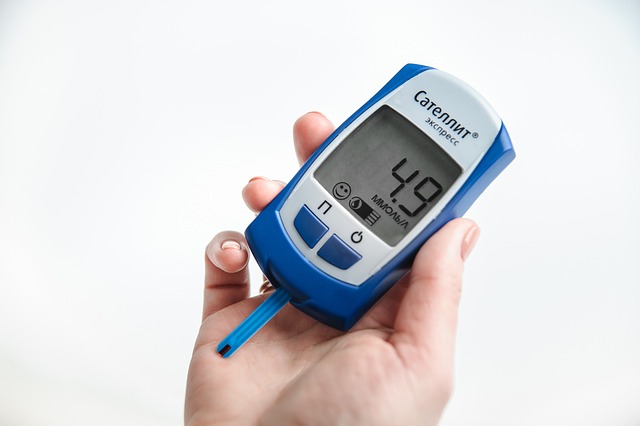1 in 3: Why Diabetes Should Matter To Every HR Leader
Jason Paruthi
Jason Paruthi, MD is the Medical Director at Lark. With extensive experience in clinical medicine, translational research, and health technology business development, Dr. Paruthi educates partners and prospects on how to best leverage Lark for optimized health outcomes, care coordination, and cost savings in their patient populations. Additionally, he collaborates with Lark’s Health Committee and product teams to incorporate the latest evidence and clinical guidelines into Lark’s AI coaching platform. He received his BA and MD from Boston University and was a trainee and translational researcher at Harvard Medical School where he studied clinical interventions for the prevention and management of type 2 diabetes, cardiovascular disease, and obesity-related chronic conditions. Outside of work, Dr. Paruthi enjoys spending time with his family and trying out new healthy, spicy recipes.


Today, approximately 1 in 3 Americans live with prediabetes and 1 in 10 Americans live with diabetes. To anchor with numbers, this translates to 96 million Americans over the age of 18 having a very high risk of developing diabetes (accounting for diagnosed and undiagnosed) and 37.3 million Americans already having diabetes, with an estimated 33.5 million to 35.4 million living with type 2. Patients living with diabetes are more likely to experience lower quality of life, blindness, kidney failure, heart attacks, stroke and other serious comorbidities. This can have monumental impacts on your organization and its people – including absenteeism, revenue, sentiment ratings, and retention. In fact, the American Diabetes Association estimates nearly $10,000 per year of additional healthcare costs per person with diabetes, along with billions of dollars annually in indirect costs due to reduced productivity, absenteeism and disease-related disability.
The good news? There are strategies and new technologies employer organizations can implement to address controllable risk factors associated with Type 2 Diabetes and other serious conditions.
Modifiable Risk Factors
According to the Centers for Disease Control and Prevention (CDC), there are several risk factors to be mindful of for both diabetes and prediabetes - see the chart below. As you can see, many of the risk factors are the same, and prediabetes means the body is already having trouble managing high blood sugar and is at high risk for fully developing type 2 diabetes. The key risk factors an employee can control and their employer can help them with are weight gain and activity level. The CDC states that a person can prevent or even reverse prediabetes by addressing risk factors appropriately.
Associated Risk Factors:
Source: https://www.cdc.gov/diabetes/basics/risk-factors.html
Addressing Modifiable Risk Factors
Significant weight gain and a lack of physical activity are often linked by a third variable - diet. This might sound obvious, but the science may go deeper than we once thought. Eating healthy food appears to promote the growth of “good” bacteria, which in turn may positively affect production of neurotransmitters like serotonin. Studies have shown that the risk of depression is 25% to 35% lower in those who eat a “traditional” diet like the Mediterranean diet or the Japanese diet, compared to eating a "Western" diet that is high in processed and unrefined foods and sugars, according to Harvard Health.
Look to Digital Care for Added Support
As an employer, there are tools available to you today that can help support your employees seeking new methods to manage or prevent diabetes, as well as provide them actionable insights to stay healthy. In today’s work environment, employees demand and expect their employer to offer benefits outside of the traditional health insurance options. Digital care solutions have grown and shifted the way we think about care delivery and consumption, and could be the step you need to take to help your employees maintain a healthy lifestyle before, during, and after work hours.
To help fill the care access gap, we developed digital care coaching programs for the prevention and management of diabetes that can be accessed anytime, anywhere. Lark’s Artificial Intelligence-based digital Diabetes Prevention Program (DPP) - Fully Recognized by the CDC - as well as our Diabetes Management program helps employees make small behavior changes that, over time, add up to a lasting impact on their health.
In one of our latest peer-reviewed studies published in Digital Health, we showed that out of a sample population of 3,933 members using Lark’s DPP, CDC-qualifying members maintained an average weight loss of 5.3% at 12 months, with 40% achieving 5% or more weight loss. These results showed that increased coaching interactions as well as logging two or more weigh-ins per week were associated with greater weight loss.
With roughly 20% of employees working remotely full time and with 2023 remote work trends remaining uncertain, it’s imperative for employer organizations nationwide to offer a variety of care solutions that reach all of their employees locations and care needs.
To learn more about Lark’s compassionate care coaching with connected devices and accreditations, please visit Lark’s website or schedule a demo.









.webp)







.jpeg)